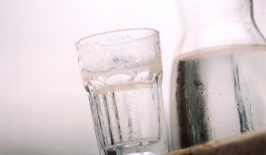What if water, from any kind of source, could be purified into something safe to drink, using the power of the sun?
March 22nd is World Water Day, a time to focus on the importance of water and think about ways of decreasing floods, droughts and contamination. Currently more than 2.1 billion people still live without access to safe drinking water at home, while access to water is set to become more and more difficult as a result of climate change, with half of the world’s population predicted to be living in areas of high water stress by 2025.
One possible solution is desalination plants, where salt water is turned into drinking water. But running them requires a lot of energy, and they’re mainly run using fossil fuels, making them a contributor to the droughts and water shortages that they are meant to mitigate. And they’re expensive to run too, making the water they produced into an expensive commodity.
William Janssen had spent his career working in water-scarce regions, including in Abu Dhabi, soon to be home to the world’s largest desalination plant and where almost all drinking water is produced in this way. This sparked a desire in him to find a more sustainable way to produce drinking water, and what started out as a hobby project in his living room became the Desolenator prototype in 2012.
The Desolenator is a mobile, off-grid desalination unit, with a solar panel that uses distills water using the waste heat created in the production of electricity. That means that the device is able to create purified water from all kinds of different sources – including rain- and seawater – completely emission free. It doesn’t require any kind of filter, membrane or chemical, and it can produce around 15 litres of distilled water per day.
Normal solar panels are only around 15 per cent efficient, meaning the rest of the solar energy that they receive is wasted as heat. The Desolenator uses a patented system that combines this “waste” thermal energy with the electrical energy produced by the panel and uses to boil the water. The water vapour produced is then condensed in an internal heat exchanger which results in clean drinking water. The heat that is left over is fed back into the system in a continuous cycle that helps keep the production running.
Janssen expects his solution to help people living in places where water is a scarce resource but also to offer a solution in countries where there is not enough money to build desalination plants or that are in remote places where tap water is unavailable. “Other devices produce more water, but they are significantly more expensive, and they require quite a bit of maintenance and consumables,” Janssen told Fastcompany.
According to the company, the device has a lifespan of 20 years and only needs minimal maintenance. It also contains a miniature computer that enables pay-per-use mobile micropayment, remote monitoring and data analytics.
Based in London and the Netherlands, Desolenator has already won a number of awards and received investment from several companies. Currently, three types of Desolenator are expected to be manufactured: a portable, a household and a community model.
Technology such as this could offer a truly sustainable way to respond to the growing global water crisis, where more and more people no longer able to rely on local sources or a national water grid. And it’s part of a larger move towards technologies that combine renewable energies and water supply in a completely sustainable system, such as solar-powered irrigation systems and a device that purifies water using solar disinfection and tells you when it’s safe to drink.





